The hotly contested compact system camera (CSC) market has a raft of great models, making it tough to choose between them. We’ve compared some of the best to make it a little easier.
The past few years have seen a rapid increase in the quantity of compact system cameras (CSCs) available to buy. It’s not surprising, then, that the job of picking the right model for you can be daunting. In this round-up, we’ve picked a range of comparable cameras and will be taking a look at not just their key features, but also their design and suitability for certain tasks.
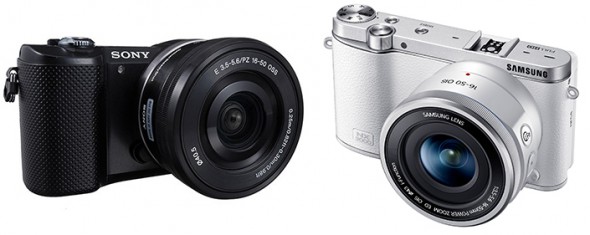
Sony A5000 vs Samsung NX3000
Both of these cameras sport sensors around the 20MP mark – perfect for recording fine detail. With a higher maximum ISO of 25600, the NX3000 is set up to make the most of low-light situations; though the A5000 is also well represented at ISO 16000. A 16-50mm f.3.5-5.6 kit lens is the standard arrangement in each case (equivalent to 24.6-77mm in 35mm terms), giving comparatively similar physical size.
At 210g, the Sony A5000 comes in as the lighter of the two, with Samsung’s offering tipping the scales at 341g. Packed full of features and not too bulky, either of these two would be a great consideration for anyone wishing to travel light and take pictures unobtrusively.
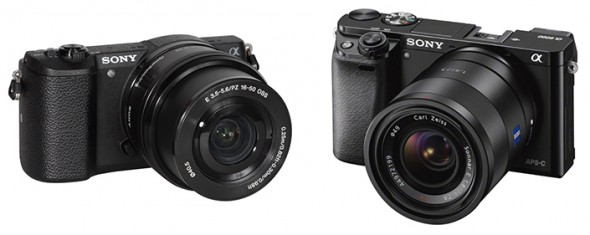
Sony A5100 vs Sony A6000
With an impressive number of autofocus points – 179, to be precise – the Sony A5100 and Sony A6000 excel when it comes to pinpoint accuracy. Fast-paced photography is well catered for; a burst rate of 6 and 11 frames per second, respectively, increases the chances of capturing sequences. With Wi-Fi and NFC functionality, each model will appeal to both entry-level and more proficient shooters who love sharing their pictures immediately via mobile.
The A5100 currently nestles just below the A6000 in the Sony lineup, but is equally stylish and functional. At 224g, it does have a notable weight advantage – the A6000 is almost double the weight at 400g – but, either way, both models offer simple styling and action-stopping capabilities.
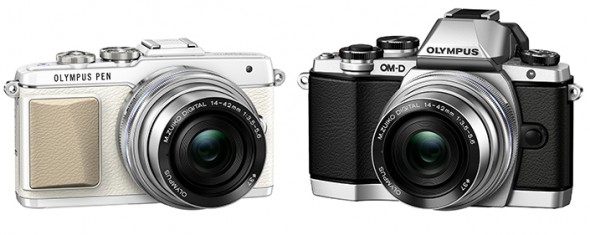
Olympus PEN E-PL7 vs Olympus OM-D E-M10
The E-PL7 was designed with striking selfies in mind; for this reason, it has a bright, 3-inch, high-resolution flip-down/tilt touch screen and various ‘selfie mode’ settings. The smallest and lightest model in the OM-D lineup, the E-M10 also allows you to control its 3x electronic zoom and check pre-exposure details such as composition using a smartphone, thanks to built-in Wi-Fi. Both models use a powerful 16.1 megapixel Live MOS sensor, making the most of Olympus’ excellent M.ZUIKO lenses.
Aside from their technical merits, the appeal of these two cameras is undoubtedly their retro styling. With an all-metal finish, they are perfectly suited to everyday shooting, with user-friendly features and controls.
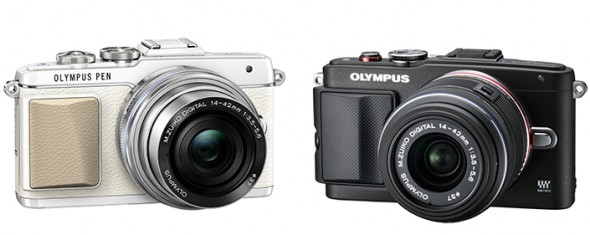
Olympus PEN E-PL7 vs Olympus PEN E-PL6
There are a number of key differences between these Micro Four Thirds cameras. Firstly, the E-PL6 has 35 focus points, rather than the 81 featured on its higher-priced sibling. Each model has the ability to capture RAW and JPEG files both individually or simultaneously; however, when it comes to sequence shooting, the E-PL6 just has the edge by offering a maximum of 27 RAW frames as apposed to 20 by the E-PL7.
Design-wise, there’s not a lot to tell between the two; both offer a slim profile that perfectly complements the standard 14-42mm f.3.5-5.6 EZ lens. A range of finishes is available to suit varying tastes, including black, silver and white.
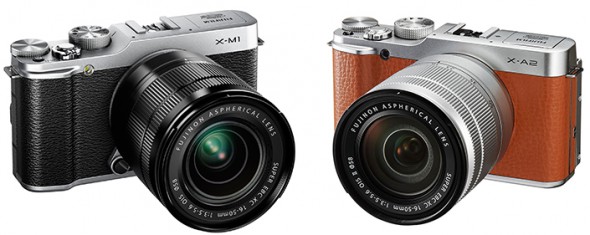
Fuji X-M1 vs Fuji X-A2
Highlights of the X-A2 include a 175-degree tilting LCD screen and a minimum working distance of 15mm, making it ideal for macro photography. Sporting the 16.3MP APS-C X-Trans CMOS sensor, the X-M1 offers an impressive 5.6 fps and a start-up time of 0.5 seconds. Shutter lag is 0.05 seconds, meaning less chance of missing spontaneous moments. Both cameras feature a built-in pop-up flash with a respectable guide number of 7.
The X-A2 is a development of the X-A1, whilst the X-M1 is the third retro compact in the Fuji X-series. Combined with the 16-50mm f.3.5-5.6 OIS lens, each covers a wide range of shooting situations.
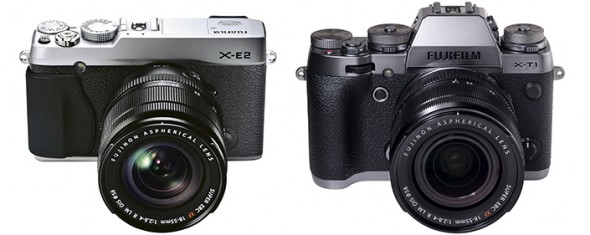
Fuji X-E2 vs Fuji X-T1
Higher up the price range, Fuji offers yet more added performance for your money. From the inclusion of a super fast Real Time electronic viewfinder (lag time 0.005 seconds) and speedy autofocus (thanks to the latest EXR Processor II), to 1080p HD video recording capabilities and weather-resistant build (X-T1), increased spec is the order of the day. Top standard shutter speed in both cameras is 1/4000 sec, perfect for freezing action.
At 440g, the X-T1 will appeal to those who appreciate its SLR-style handling, complete with supplied hot-shoe flash, whilst the simplicity of the lighter, the X-E2 (with built-in pop-up flash) also offers quick shooting when you’re on the go.
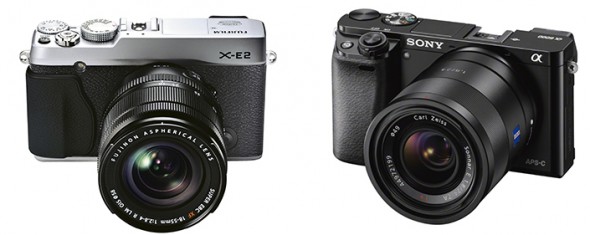
Fuji X-E2 vs Sony A6000
A number of clear differences separate these two. On the surface, the higher-priced Fuji loses out on megapixel count (16.3MP as apposed to 24.3MP) and autofocus points (49 compared to 179), but both feature the added bonus of Wi-Fi. Lens-wise, they are comparable – the X-E2 has an 18-55mm, whilst a 16-55mm sits up front on the Sony. As you’d expect, full HD 1080p video and Live View feature on both cameras, recording to SD memory cards.
With just 50g separating this pair, both are nicely compact – perfect for travel and spontaneous portraits where subtlety is a priority. The Fuji arguably has a more rangefinder-like look to it, which some users may prefer.
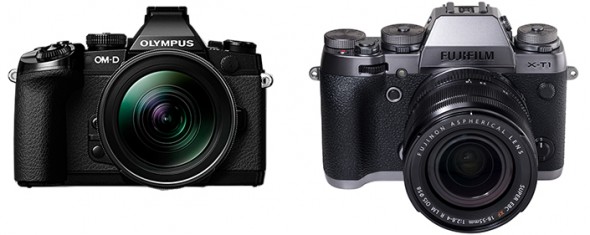
Olympus OM-D E-M1 vs Fuji X-T1
It’s a very close specification match here. Both cameras feature a 16.3MP sensor and crisp 3” screen, but the low-light advantage goes to the Fuji (ISO 51200 at the top end, as apposed to Olympus’ ISO 25600). As an almost like-for-like comparison, the OM-D E-M1 kit option benefits from a wider focal range with a bright 12-40mm (vs 18-55mm), making the most of 10 frames per second capture rate (vs 8fps).
On physical appearances, we’re getting into the realms of SLR-style cameras here – ideal if you prefer a larger, weightier camera in your hands. There’s also a hefty price tag to match; be prepared to part with a four-figure sum in either case.
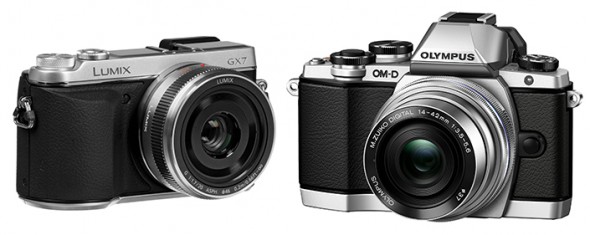
Panasonic Lumix GX7 vs Olympus OM-D E-M10
With more focus points (81 vs 23) and a faster frame rate (8fps vs 5fps), the Olympus is a great option for capturing fast-paced action. Both models benefit from 3in tiltable touch screens and built-in flash, as well as comparable 16MP (GX7) and 16.1MP (E-M10) sensors. As you would expect, they are also supported by a wide range of Micro Four Thirds lenses and system accessories to help you shoot the pictures you want.
Both of these cameras pack a punch, but aesthetically, they are quite different to look at. The GX7 is perhaps best suited to those looking to keep overall size to a minimum – maybe when travelling or looking for a more ‘take anywhere’ option.
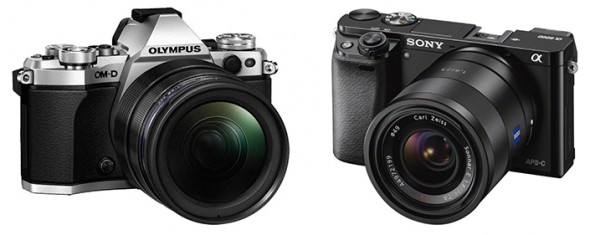
Olympus OM-D E-M5II vs Sony A6000
Thanks to great metering systems (324-area digit ESP in the Olympus and 1200-zone evaluative in the Sony), these two deliver rich, vibrant tones in wide-ranging scenarios. The A6000 may benefit from a higher megapixel count (24.3MP vs 16.1MP), but the quality of the E-M5II’s bright 12-40mm f2.8 PRO kit lens is easily on a par with the Sony’s 16-50mm f.3.5-5.6 Power Zoom OSS kit.
If you’re looking to spend less, the Sony is clearly the better option here – at around one-third the price of its contender. However, with 10+ fps rates, both would be great considerations for capturing sports and live action. Being weather-resistant, the Olympus is well suited to outdoors folk.
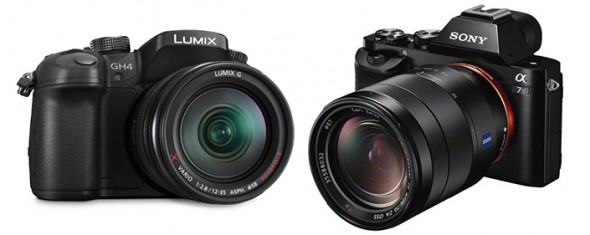
Panasonic Lumix GH4 vs Sony A7S
The most advanced compact system camera in the Lumix G-Series, the GH4 boasts 16.05MP compared to the A7S’ 12.2MP. Both cameras are set up to shoot 4K video, making the most of the very latest technology, including Wi-Fi and NFC connectivity. Sony’s ’S’ model offers exceptional low-light sensitivity (maximum ISO 102400, expandable to 409600), putting it ahead of the Lumix’s still-respectable maximum of ISO 25600).
If shooting high-definition video is your main focus, these two are certainly well worth considering. Their designs are quite different – Panasonic favouring a softer, more rounded appearance versus Sony’s somewhat angular look – but, either way, both models are perfectly equipped to make the most of the technology packed inside.
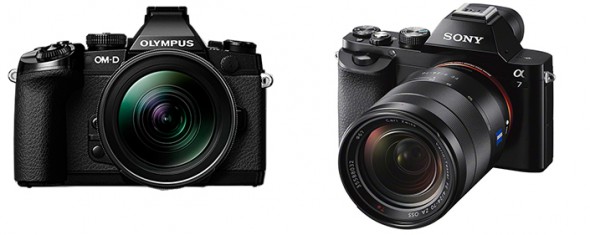
Olympus OM-D E-M1 vs Sony A7
One of the biggest differences here is that the A7 uses a 35mm full-frame CMOS sensor, giving an aspect ratio of 3:2. The EM-1’s Live MOS, by comparison, gives a ratio of 4:3 thanks to its smaller 17.3 x 13.0mm size. Either way, both will deliver striking stills and HD video footage.
Each of these cameras offers a multitude of advanced features in a robust, compact body. The bodies are not as compact as some in this guide, but no doubt photographers will weigh up the relative merits of size versus function versus cost before purchase. Price is much the same between the two (body only), so take your pick whether shooting portraits, landscapes or anything in between.
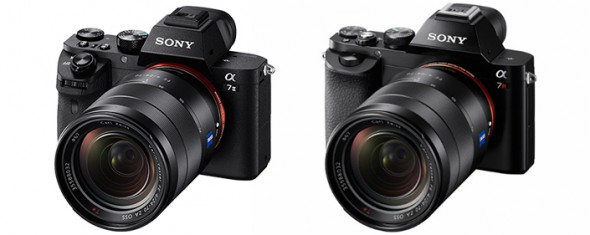
Sony A7II vs Sony A7R
Both variants here offer full-frame sensors and 100% viewfinder coverage, with the A7II delivering 24MP. The A7R packs a hefty punch at 36.4MP. The autofocus system is the same in each body – Contrast Detect – although the former offers 117 AF points, with the latter giving a more modest sum of 25. Lens mount is the Sony ‘E’ variety, allowing the user to benefit from a wide range of lenses for ultimate creative control and picture-making ability.
Aesthetically, there’s not a great deal of difference between these two models. Compact size and a light, durable build mean that either option is well suited to regular use in the field as well as the relative comfort of somewhat more domestic locations.
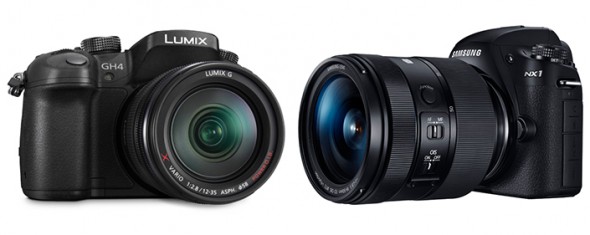
Panasonic Lumix GH4 vs Samsung NX1
Perhaps the closest pairing here, one of the biggest defining features is the megapixel count (the GH4 has 16.05MP, the NX1 has 28.2MP). A built-in flash features on each of the cameras, with the Panasonic’s offering slightly more output (guide number 17, compared to 11). Each manufacturer offers added functionality and shooting options, thanks to an optional vertical grip that attaches to the base; in real-world terms, this means the convenient location of key buttons/switches and a more comfortable hold for vertically-framed pictures.
Thanks to both cameras’ ability to capture images at frame rates in excess of 10 frames per second, both the NX1 and GH4 are worth considering if you regularly shoot portraits and/or encounter fast-moving subjects.
About the Author
Giles Babbidge is a commercial and editorial photographer based in Hampshire. He travels all around the UK and works with a wide range of clients – you can find out more about his day-to-day activities over at his website.

